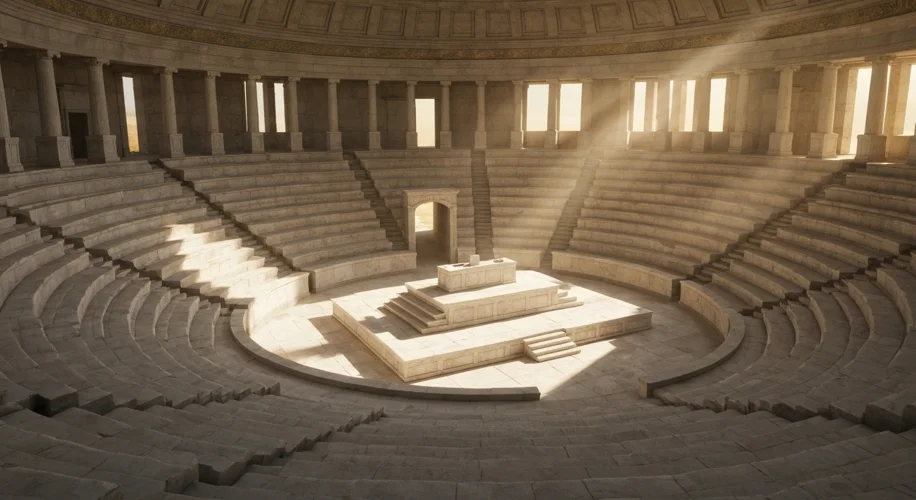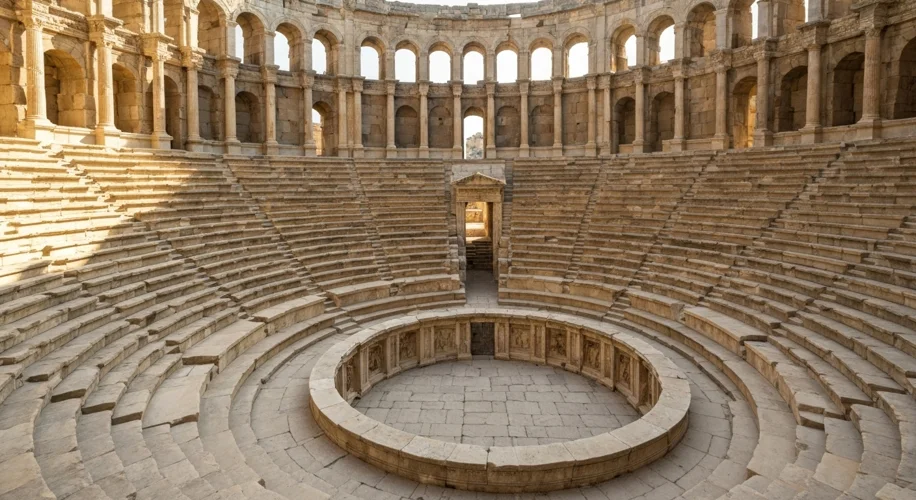The dusty plains of western Turkey, near the modern town of Denizli, hold secrets buried for millennia. Among them lies the once-magnificent city of Laodicea, a thriving metropolis in the Roman Empire. Recently, archaeologists unearthed a remarkable structure: a Roman council building, or bouleuterion, dating back an astonishing 2,050 years. This discovery is more than just old stones; it’s a window into the heart of Roman provincial life, revealing the intricate machinery of governance and urban planning that characterized this vast empire.
Laodicea itself was a significant player in the region. Founded in the 3rd century BC by Antiochus II Theos of the Seleucid Empire, it later fell under Roman control and flourished as a wealthy city, renowned for its textiles, banking, and a famed medical school. Its strategic location on trade routes ensured its prosperity, and the Romans, masters of organization, integrated it seamlessly into their vast administrative network. The bouleuterion, a cornerstone of civic life in any respectable Roman city, would have been the epicenter of political debate, decision-making, and the articulation of civic identity.
Imagine the scene nearly two millennia ago. Picture citizens gathering, perhaps dressed in their finest togas, awaiting news from the council. Inside the bouleuterion, the air would hum with anticipation. Here, elected officials, the boulē, would convene. These were the men who managed the city’s affairs, levied taxes, oversaw public works, and represented Laodicea’s interests to the wider Roman administration. Their debates, often passionate, would have shaped the daily lives of everyone in the city, from the wealthiest merchant to the humblest artisan.

The architectural design of these council buildings was crucial to their function. Typically semi-circular, they featured tiered seating, often arranged in a horseshoe shape, accommodating the council members. A central platform or bema would have served as the speaker’s podium, ensuring that pronouncements and debates could be heard clearly. The acoustics were carefully considered, reflecting the importance of public discourse. The quality of the materials used – often fine stone and marble – also spoke to the city’s wealth and its commitment to the civic process. The 2,050-year-old structure in Laodicea, with its enduring architectural elements, stands as a testament to Roman engineering and their understanding of how space influences human interaction and governance.
The discovery offers invaluable insights into Roman urban planning. The placement of the bouleuterion within the city, often near the forum or other public buildings, underscored its central role in civic life. It was a place where the Roman ideal of citizenship was enacted, where local autonomy met imperial authority. Understanding the layout of Laodicea, and the specific function of its council building, helps us piece together the mosaic of Roman provincial administration. It highlights how Roman governance wasn’t solely dictated from distant Rome, but was also a deeply localized affair, managed by local elites operating within a Roman framework.
This ancient building, now brought to light, is more than just an archaeological find. It is a tangible link to the past, a reminder that the structures of governance, the debates over public policy, and the very idea of civic engagement have deep roots. The council building of Laodicea whispers tales of a world not so different from our own, where citizens gathered to shape their communities and where the foundations of modern urban life were being laid, stone by carefully placed stone.

